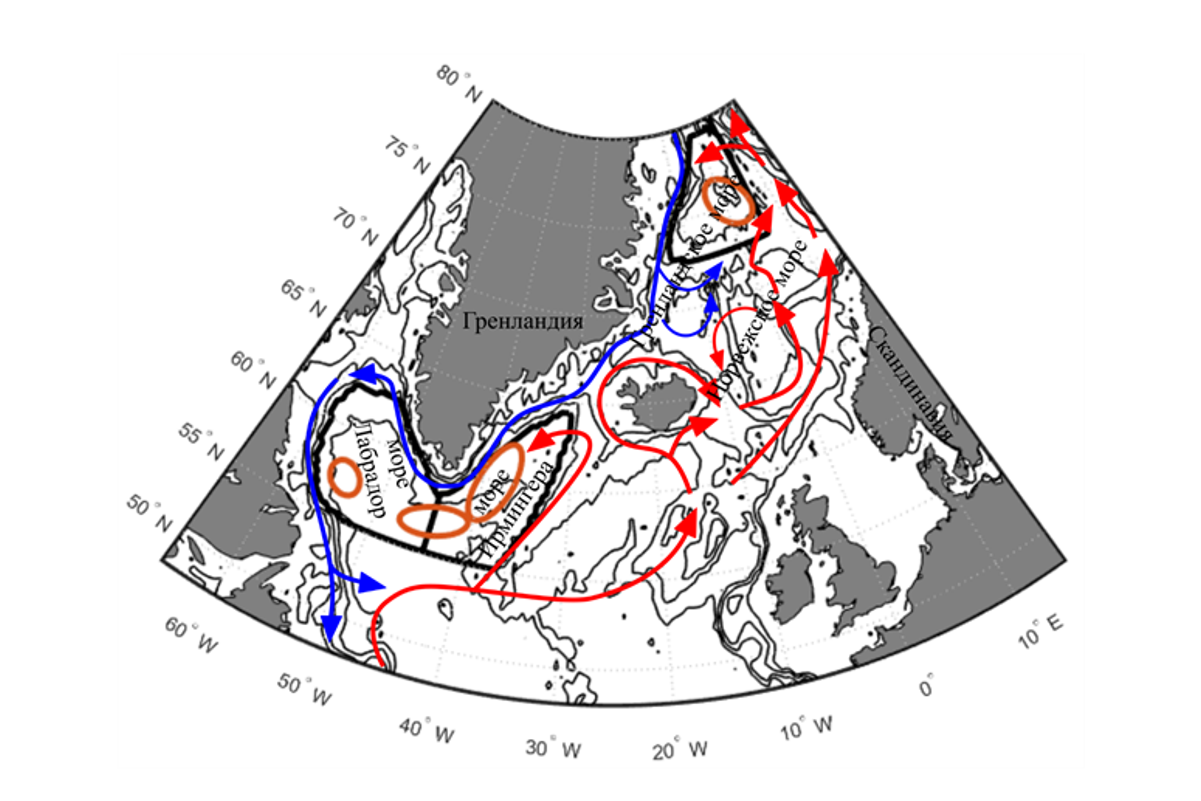Scientists from St Petersburg University have peered into the Atlantic’s past to learn about the Arctic’s future

Oceanologists from St Petersburg University together with specialists from the polar research foundation ‘Nansen Centre’ have developed an algorithm that made it possible to find out what had happened to the deep convection regions of the Atlantic almost 70 years ago. These zones, where water from the surface of the ocean sinks to its bottom, affect how much heat is transferred to the Arctic. The research findings will help scientists understand how the climate of the northern region will change in the future.
The movement of water in the oceans can be represented as a huge conveyor, carrying warm surface water to the north of the Atlantic and then to the Arctic Ocean, and cold deep water is carried back to the south. Although the reasons for the acceleration of ice melting in the Arctic in recent decades remain the subject of debate, scientists cite an increase in heat flow with ocean currents as one of the possible factors.
These surface and deep currents are connected to each other through a deep convection process. In some subpolar regions, the water on the surface of the ocean cools, becomes denser and goes to the bottom – this process is called convection. If the ocean releases more heat to the atmosphere, then the process becomes more intense, accelerating the movement of the entire global conveyor. Today, scientists are aware of four areas of deep convection in the North Atlantic. They are in: the Greenland Sea; the Labrador Sea; the Irminger Sea; and also the area between the Labrador and Irminger seas.
‘The dimensions of convection areas in the expanse of the ocean are very small. They are only about 100 kilometres in diameter. Moreover, every winter they appear in different places and at different times. These areas are fairly difficult to detect using the quite small number of oceanographic observations that are available,’ said Igor Bashmachnikov, the project manager and associate professor of St Petersburg University. ‘We have more or less reliable observations of convection intensity only over the past 10–15 years, and on the scale of climate change this is too short a time to reliably determine the development of climatic processes.’
To address this challenge, oceanologists have developed a new algorithm which is based on observational data from 1950 up to the present. It has made it possible to understand how the intensity of convection has changed in the three seas over the past 70 years. According to Igor Bashmachnikov, the results turned out to be quite unexpected. For example, convection in the Irminger Sea, which was previously considered less significant, has the greatest effect on the speed of the global conveyor, and therefore on the ‘transfer’ of heat to the Arctic. However, the rapid melting of the Greenland glaciers, which many scientists around the world are currently talking about, has not yet had a significant effect on deep convection.
‘We have also managed to identify the cycles of convection development lasting for about 30 years,’ Igor Bashmachnikov said. ‘These cycles were previously known for fluctuations in various atmospheric and oceanographic characteristics, but for the first time we detected the changes in the intensity of deep convection. Now we see that the rate of warming is slowing down, which might be the juxtaposition of a similar 30-year cycle in the general trend.’
During the next stage, the scientists will make forecasts. To do this, they will use the same algorithm, but based on data from climate models. ‘The causes of Arctic climate variability remain largely unclear,’ explained Igor Bashmachnikov. ‘Our work will contribute to understanding the mechanisms of today’s climate change.’
The project ‘Dynamics of deep oceanic convection in subpolar and polar oceanic regions under climate change, its relation on freshwater and heat contents and effect on the Atlantic Meridional Overturning Circulation’ is supported by a grant from the Russian Science Foundation No 17-17-01151.

